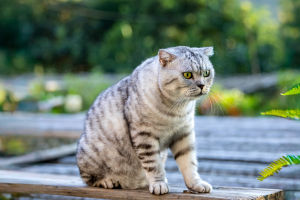Floating over a coral reef, it's hard not to be amazed. Colors explode everywhere—tiny fish dart between coral branches, while larger creatures glide gracefully past.
Beneath the surface lies one of the most diverse ecosystems on Earth, full of life that's both fragile and resilient.
Coral reefs cover less than 1% of the ocean floor, yet they support about a quarter of all marine species. This incredible biodiversity makes them natural treasures worth understanding and protecting.
Coral: The Architects of the Reef
Coral may look like rock, but it's actually made up of tiny animals called polyps. These polyps build calcium carbonate skeletons that form the reef structure. Hard corals provide shelter and surfaces for countless marine species, while soft corals add flexibility and additional habitat. Coral reefs grow slowly, often only a few centimeters per year, but they create a complex maze that serves as a home, nursery, and feeding ground for many creatures.
Fish Diversity
One of the most obvious signs of reef life is its colorful fish population. Clownfish weave through anemones for protection, parrotfish graze on algae to keep the reef healthy, and angelfish patrol their territories. Each species has a role, whether it's cleaning, feeding, or providing shelter. This interdependence keeps the reef ecosystem balanced and thriving. Some fish even display specialized behaviors, like mimicry or cleaning other species, which highlights the reef's complexity and cooperation.
Invertebrate Inhabitants
Beyond fish, coral reefs host countless invertebrates. Sea stars, sea urchins, and spiny lobsters navigate the coral maze, while tiny shrimps and lobsters maintain the reef by cleaning debris or hunting pests. These small creatures often go unnoticed, but their presence is vital. For example, cleaner shrimp remove parasites from larger fish, maintaining overall reef health. Invertebrates play critical roles in nutrient recycling, predator-prey balance, and structural support of the ecosystem.
Symbiotic Relationships
Reefs are a network of partnerships. Coral polyps host microscopic algae called zooxanthellae, which provide nutrients through photosynthesis. In return, the coral offers protection and sunlight access. Fish and other animals also form symbiotic relationships: cleaner fish remove parasites from host fish, while some shrimp hide in anemones for safety. These mutual benefits allow multiple species to thrive together, demonstrating how collaboration drives survival in nature.
Unique Adaptations
Life on the reef requires adaptation. Many animals have evolved camouflage to avoid predators, bright colors to warn or attract mates, or specialized feeding methods. Parrotfish, for example, use beak-like teeth to scrape algae from coral, which helps maintain reef health. Some octopuses and cuttlefish change color to blend with their surroundings instantly. These adaptations show how species evolve in response to the reef's complex and competitive environment.
Threats and Resilience
Despite their diversity, coral reefs are vulnerable. Rising ocean temperatures, pollution, and overfishing threaten reef stability. Coral bleaching occurs when polyps expel their algae, leaving the coral weak and pale. However, reefs are resilient. Some corals can recover from bleaching, and certain species adapt to changing conditions. Protecting reefs through sustainable practices, marine reserves, and pollution reduction is essential to maintain these ecosystems for future generations.
Human Connection
Coral reefs are more than natural wonders—they provide food, coastal protection, and income through tourism for millions of people. Learning about reef biodiversity helps us appreciate their value and understand why conservation matters. Snorkeling or diving in healthy reefs reveals how interconnected and dynamic life underwater can be, making the need to protect them tangible and immediate.
Reflection on Coral Life
Watching a reef flourish is like observing a city under the sea. Each species, from the smallest shrimp to the largest grouper, contributes to a delicate balance. Coral reefs teach us about cooperation, adaptation, and resilience. The vibrant life they host reminds us that even in fragile environments, nature can create astonishing complexity and beauty—if we protect and respect it.


